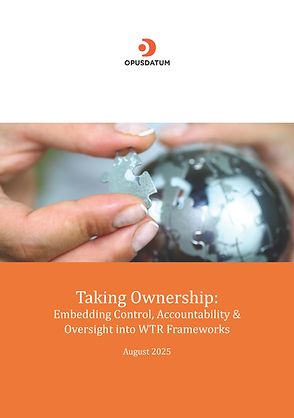Taking Ownership: Embedding Control, Accountability & Oversight into WTR Frameworks
August 2025
The increasingly complex landscape of wire transfer regulation (WTR) and the FATF Travel Rule presents critical challenges for Payment Service Providers (PSPs) and Virtual Asset Service Providers (VASPs). With regulatory expectations intensifying, cross-border complexities growing, and operational risks expanding, firms can no longer rely on generic AML frameworks to meet their obligations. Instead, they must embed clear operational ownership, robust oversight, and strategic governance into their WTR frameworks to close compliance gaps and build resilience.
This Paper Focuses On:
The evolution of WTR and Travel Rule requirements and their uneven global implementation
Why operational ownership must sit in the first line, supported by embedded risk functions and overseen by independent FCC teams
A practical governance blueprint using the three lines of defence and RACI models to clarify roles and accountability
Technical and procedural enablers for compliance, including ISO 20022 migration, Travel Rule interoperability, and exception handling
Case studies highlighting real-world failures, governance pitfalls, and successful remediation strategies
This Paper Is Intended For:
Compliance and risk leaders in PSPs, VASPs, and e-money institutions
Heads of Payment Operations and client lifecycle management
Financial Crime Officers, MLROs, and senior managers accountable for AML/CTF obligations
Board members, audit committees, and governance stakeholders overseeing financial crime controls
Technology and operations teams implementing payment and Travel Rule compliance systems
Effective WTR and Travel Rule compliance demands more than policy documentation - it requires live execution, data integrity, and integrated governance across the organisation.
Download the full white paper to explore how PSPs and VASPs can take ownership, strengthen oversight, and meet the compliance expectations of 2025 and beyond.
